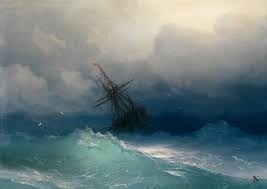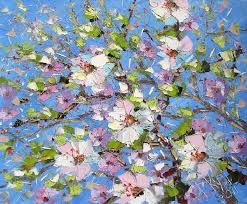VITEBSK ART SCHOOL (part 2)
 Having learned the lessons of new European art and declaring himself to be a rapidly maturing master, M. Chagall returned to Vitebsk on the eve of the First World War. In fact, in less than a decade, from an unknown student of a provincial artist, he grows into one of the leading masters of the emerging avant-garde. And this is not surprising if you pay attention to how easily and organically he created his original art system, attracting childishly naive imagination and romantic metaphor, intrepidly departing from realism and ahead of the masters of Western Europe, whose evolution indicates the intense efforts made to free oneself from the tenacious embrace of the artistic tradition.
Having learned the lessons of new European art and declaring himself to be a rapidly maturing master, M. Chagall returned to Vitebsk on the eve of the First World War. In fact, in less than a decade, from an unknown student of a provincial artist, he grows into one of the leading masters of the emerging avant-garde. And this is not surprising if you pay attention to how easily and organically he created his original art system, attracting childishly naive imagination and romantic metaphor, intrepidly departing from realism and ahead of the masters of Western Europe, whose evolution indicates the intense efforts made to free oneself from the tenacious embrace of the artistic tradition.
Chagall left Vitebsk, returned, again left, until, finally, returned to his hometown in September 1918 with the mandate of the “Commissioner for Arts in the Vitebsk province”, which gave the artist broad powers in the field of art culture.
Chagall saw his main task in creating a folk art school. In a letter to P. Ettinger dated April 2, 1920, the artist wrote: “… The idea of organizing Hood. He taught., It occurred to me upon arrival from abroad, while working on the Vitebsk Series of studies. In Vitebsk even then there were many … pillars, pigs and fences, and artistic talents dozed off somewhere. Looking up from the palette, I rushed off to St. Petersburg, Moscow, and the School was erected at the end of 1918.
It is incredible, but the fact that in the conditions of the civil war, in the essentially front-line city, where there weren’t enough rooms for hospitals and barracks, Chagall managed to achieve the allocation of a nationalized mansion for the educational institution with all the furnishings, previously owned by one of the directors of the Vitebsk Tram joint-stock company I.V. Vishnyak (ul.Bukharinskaya, d. 10, now – St.Pravdy, d. 5-a). The successes of the organizational activities of M. Chagall were largely explained by the serious support and attention of the department of art of the People’s Commissariat for Education, which D. Shterenberg was in charge of during these years.
Folk art school (school) was organized as a labor school. It planned a variety of art and production workshops to carry out tasks, orders, provided for the execution of signs, slogans, posters, etc. The school program was published in the local press, which stated that the functioning of such workshops should contribute to the decoration of the city. There were theoretical subjects next to practical subjects, for example, “theoretical acquaintance with the methods of contemporary“ left art ”. In his article “On the Vitebsk Folk Art School” M. Chagall writes: “Dreams that children of the urban poor, somewhere in their homes lovingly stained paper, join the art, – it is embodied … We can afford the luxury of“ play with fire “, and in our walls are presented and operate freely manuals and workshops of all directions from the left to the” right “inclusive.”
Chagall invites artists of Petrograd and Moscow to teach in Vitebsk, takes care of the material base, and leads the organizing committee for the construction of an art school and communal workshop. Burning with impatience, he is trying to speed up the enrollment of students and gives the communal workshop the exclusive right to perform art and production work in the city. On incoming applications with a request for admission to the communal workshop from members of the artel’s group of painters and the Section of painters at the Vitebsk department of the All-Russian Union of Construction Workers, a resolution is put: “To accept them on an equal footing in accordance with the developed charter” with the addition: “and as school students,” with a sweeping autographed by M. Chagall. Only in December 1918, the first traces of the real activities of the school were discovered, a competition for sketching art signs for schools and cultural and educational institutions was held, the members of the jury of which were M. Dobuzhinsky, M. Chagall, Y. Tilberg and others. December 20, 1918 telegram from Petrograd: “Approved by the board director, Dobuzhinsky director, heads Radlov, Tilberg, Chagall, Lyubavina.” The official opening of the school took place on January 28, 1919. M. Dobuzhinsky soon left the school and in February-March 1919 he was headed by M. Chagall, continuing to realize his idea of the school as a system of free workshops led by artists of different directions with their own vision of tasks and teaching methods. The “Shagalovsky stage” in the history of the educational institution is notable for its democratism and loyalty to artist-educators. Under Chagall, a system of art education began to take shape in the province, art schools (studios) were opened in the district towns of Velizh, Nevel, Lepel, Orsha, and Polotsk.




